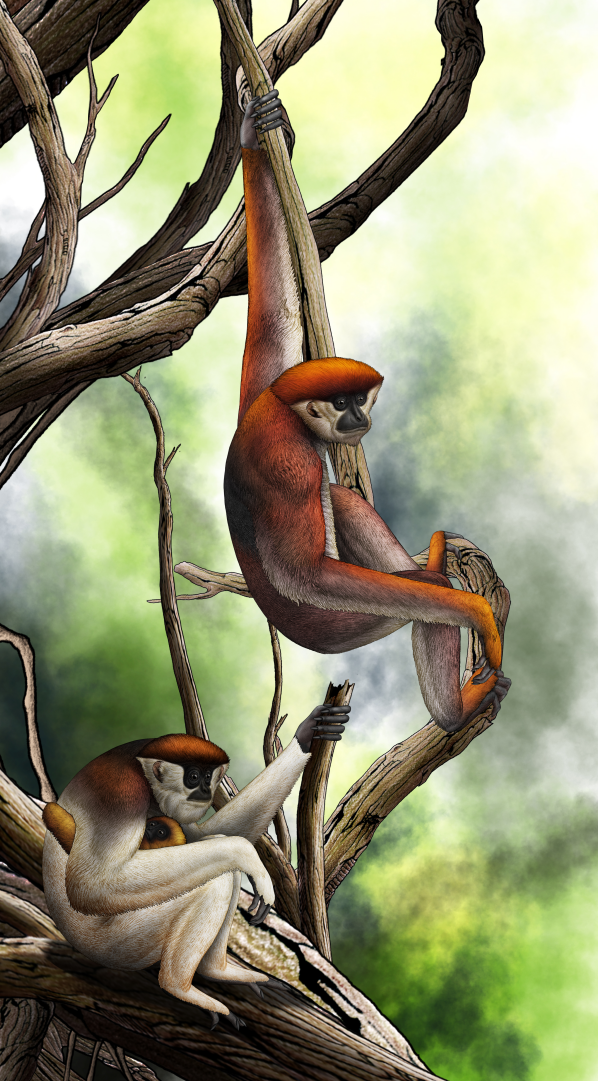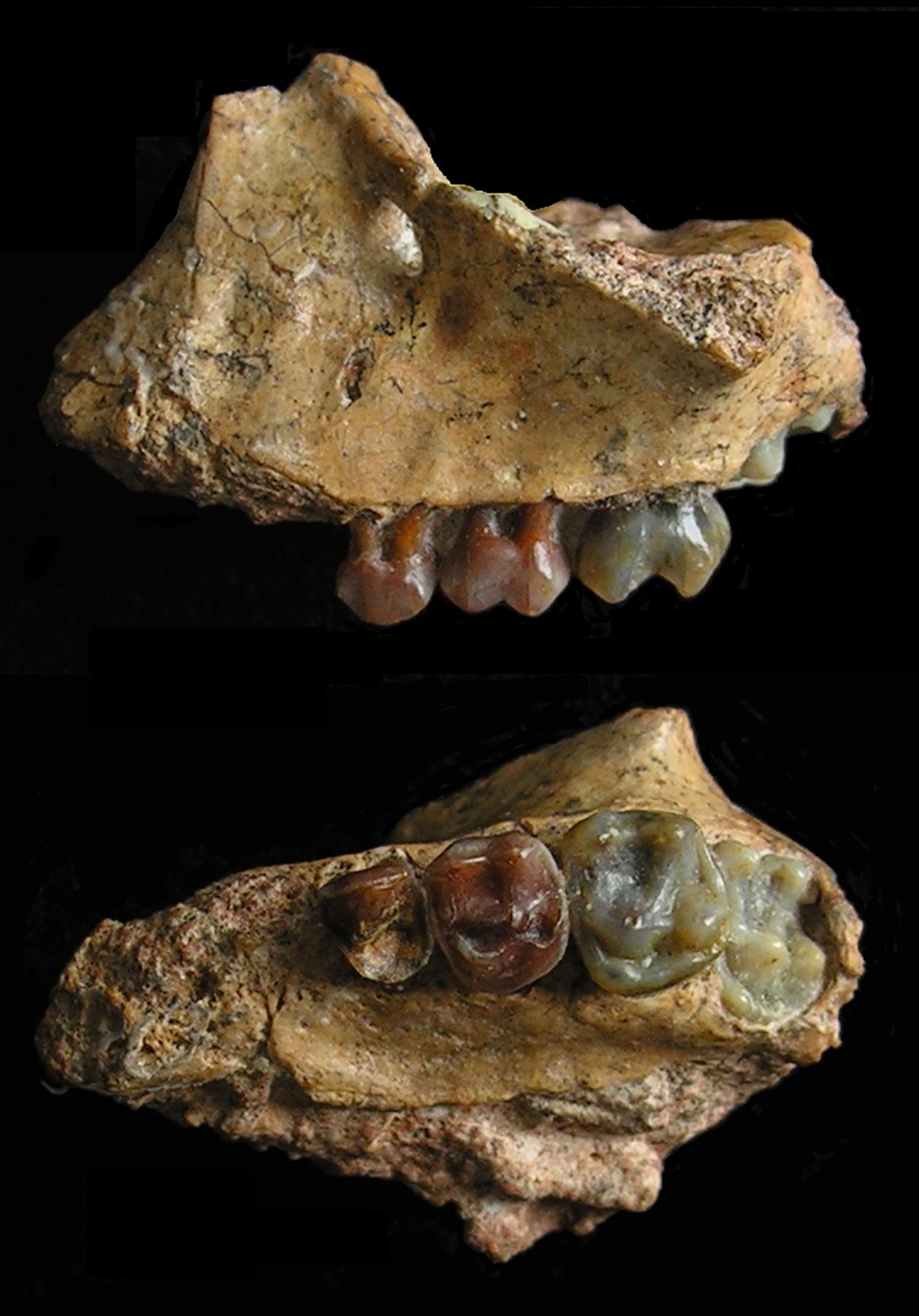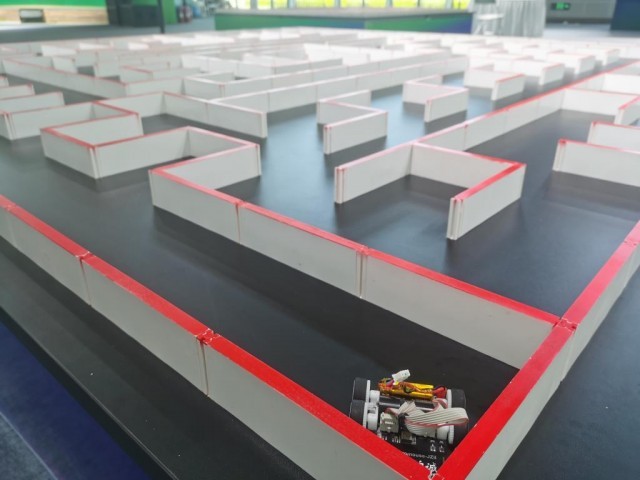Yunnan Yuanmou, China discovered the earliest gibbon stone
Author:Global Times Time:2022.09.28
Recently, scientific research teams such as Kunming Institute of Animal Research from the Chinese Academy of Sciences have studied small ape fossils newly discovered in southwest China (Yuanmou in Yunnan), and have obtained evidence of the earliest known gibbon.

The small ape named Yuanmou's little ape was newly discovered by Yuanmou, Yunnan, and was identified by the scientist team as the earliest gibbon discovered so far. This discovery pushed the gibbon to 7-8 million years ago. This achievement was published in the international academic journal "Human Evolution" a few days ago. From the Institute of Animal Research of the Chinese Academy of Sciences, the New York University, the Chinese Academy of Sciences and the Institute of Ancient Human Research, the Institute of Cultural Relics and Archeology of Yunnan, the Institute of Geology and Geophysics of the Chinese Academy of Sciences, Yunnan University, Chuxiong State Museum and Yuanmouman Museum Participated in this inspection and research.
Today, there are 20 types of gibbon familys, mainly in the Asian tropical and subtropical regions of the Central South Peninsula, including South China and Southeast Asia in my country. There are only 4-6 existing existing in my country. However, such fossils are very scarce, most of which are found in the cave locations of 2 million years ago in South China and Southeast Asia.

The research team describes in detail the Yuanmou small apes of the Yunnan Provincial Institute of Cultural Relics and Archeology, the Yuanmouman Museum, and the Kunming Animal Museum, and the incomplete left lower sides of the newly discovered. The morphological characteristics of the teeth and facial bones are very similar to the current growth of osperm, especially the coronary gibbon, but some characteristics are more primitive, indicating that it may be the ancestors of all the current growth of the aim. According to the calculation of Yuanmou's small ape's teeth, the ape of the ape of the Yuanmou is similar to the average weight of the current growth of the cubs, about 6 kg.
Earlier discovered a lower molar (12.5-13.8 million years ago) in India (12.5-13.8 million years) was named Kapi Ramnagarensis. The original researcher claimed to be earlier. This discovery is not a gibbon, but a more primitive spiritual long category that is not closely related to the current apes, which may have a close relationship with the ancient ape of the new Shinshi of India.

Ji Xueping, the person in charge of the research project and the Kunming Animal Museum researcher at the Kunming Animal Institute, found the key specimen of Yuanmou's young ape young face bone in a field survey. In comparison, the specimen is a gibbon, and a high -precision CT scan was carried out in the ancient spine.
In 2018, Terry Harrison, a professor at the Human Evolution Center of the New York University and other collaborators, to conduct research on the gibbon tooth specimens of the Yuanmou's gibbon tooth from Yuanmou in the past 30 years. Information. Although Yuanmou's small ape specimen is very scarce, after a detailed analysis and comparative research, it can be confirmed that the Yuanmou small ape is the most likely direct ancestor in the late middle and new period of the osperm.
Studies believe that the discovery of the Yuanmou small ape filled a section of gap in the history of East Asian small ape evolution that had been unclear before. Genetics research shows that the chief of the gibbon from the ancestors of the ancestors of the man and ape is about 22-17 million years, and the time of differentiation of gibbon ancestors is about 8 million years ago.
The evidence of the earliest ancestor of the golden monkeys discovered by Zhaotong, Yunnan before, shows that the evidence of the Chinese monkey fossils is basically consistent with the origin time of the species inferred by fossil evidence. The results of paleontological form science and molecular biology can be confirmed.
However, regarding the evolution of the gibbon family, there are still more than 10 million years. During the blank period of millions of years, this period is also a critical period where the ancient spiritual long animal group alternates the modern spiritual long animal group. (CCTV reporter Shuaijun, Yunnan Taitai Chen Yu)
Source: CCTV News Client
- END -
This game gathers ingenious craftsmen around the world

Xinhua News Agency, Tianjin, August 20 (Reporter Liu Weizhen and Sister Liang) On ...
What is the use of mobile phones to support satellite communication?Do consumers spend more money?Expert: Users must pay more

On September 6, at the Huawei Mate 50 series and new autumn conferences in the who...